Recent:
Art Rotterdam 2015
Wilfried Lentz Rotterdam
— Art Rotterdam, Rotterdam
February 5 — 8, 2015
Van Nelle fabriek, Rotterdam
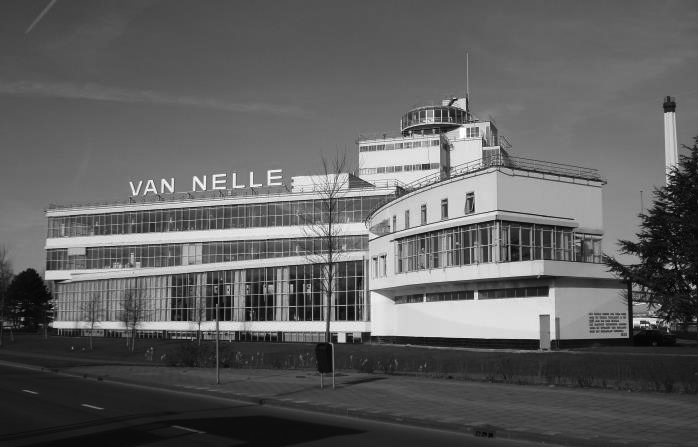
Van Nelle fabriek, Rotterdam

— Artun Alaska Arasli, Rossella Biscotti, Christian Friedrich, Matts Leiderstam, Remco Torenbosch
The 16th edition of Art Rotterdam informs you about all the latest developments in visual art. Art Rotterdam becomes more and more an alternative for the large international art fairs with different views on young art in diverse exhibition concepts. Video art can be enjoyed in an open and interactive setting at Projections. The Mondriaan Fund once again shows the youngest talents in the spectacular warehouse of the former distribution centre of the Van Nelle Fabriek, which was appointed the Unesco World Heritage status.

The Van Nelle Factory in Rotterdam is considered as one of the most important industrial heritage monuments in the Netherlands. In 1986 the building gained the status of state monument. Furthermore, the World Heritage Committee in Doha, Qatar officially decided on Saturday, 21 June 2014 to recognise the Van Nelle Factory as a UNESCO World Heritage Site.
 |
Recent:
Theatre of operations
Théâtre de l'Usine Geneva
— Théâtre de l'Usine, Geneva
January 2015 Curators: Emile Ouroumov, Bénédicte le Pimpec
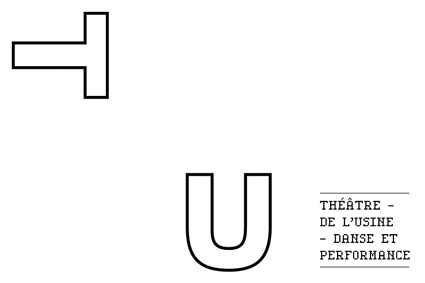
Théâtre de l'Usine, Geneva

— William Anastasi, Jesse Ash, Pierre Bal-Blanc, Nina Beier & Marie Lund, Julien Bismuth, Jens Haaning, Florence Jung, David Lamelas, Quentin Lannes, Émilie Parendeau, Aurélie Pétrel & Vincent Roumagnac, Sébastien Rémy, Remco Torenbosch, Goran Trbuljak, Franz Erhard Walther
A “theatre of operations” is a delimited geographical zone in which an armed conflict involving at least two adversaries is taking place. The related term “operating theatre” also describes the historical practice of surgery performed as a public spectacle. This project incorporates
“operations”—artistic gestures of addition, subtraction, multiplication and differentiation—in the present, and not in an immutable conception of time. Over a three-day period, these operations are being deployed in the form of an exhibition punctuated by activations, inside and outside the “black box”, in an ongoing flow, and with parallel temporalities. The objects, films, readings, interventions and exhibitions arrange their own mediation tools within the theatrical model. Coming from the vocabulary of art, by way of a productive tension they negotiate the hierarchy of the elements of the theatrical edifice, over-exposing to better deconstruct the conflict between actor and spectator, and bringing forth common areas of sensibility between live spectacle and visual art.

The term “Theatre of Operations” designates a defined geographical area in which an armed conflict is in progress, involving at least two adversaries.
 |
Recent:
Homing II
Wilfried Lentz Rotterdam
— Wilfried Lentz, Rotterdam
November 22 2014 — January 25, 2015
Curator: Wilfried Lentz

Wilfried Lentz, Rotterdam

— Doug Ashford, James Beckett, Rossella Biscotti, Josef Dabernig, Susanne Kriemann, Simon van Til, Remco Torenbosch, Leonid Tsvetkov
The formal and structural play with image and viewing, by the use of viewing devices, appropriation of old imagery and artefacts, the use of exotic technologies and the recirculation of image is another anchor in the selection of works.
Simon van Til operates the photographic camera methodically, double exposing films in order to explore notions of location and displacement, doubling and pairing. Leonid Tsvetkov uses ordinary household packaging as casts for cement forms creating totemic elements evoking drum columns from antiquity, while Remco Torenbosch will show a new body of works exploring the processes of financial and labout abstraction, embodied in historical ans recent forms of currency mining.

Wilfried Lentz Rotterdam is established in April 2008. The gallery offers an international program of contemporary art. The exhibitions express an interest in the cultural and social conditions of our environment, how it is formed and perceived, as well as its stories and myths. Most of the artists express their ideas through innovative use of the mediums of film and photography, as well as through performances and installations. Gallery artists have been included in international exhibitions such as Documenta, biennials in Venice, Istanbul, Taipei and Sao Paulo, Performa New York and Manifesta. Our clientele consists of private and institutional collectors from all over the world.
 |
Blue times
Kunsthalle Wien
— Kunsthalle Wien, Vienna
October 3, 2014 — January 11, 2015
Curators: Amira Gad, Nicolaus Schafhausen
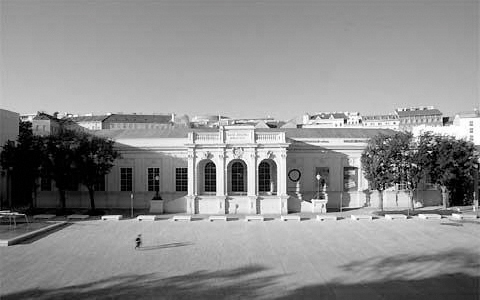
Kunsthalle Wien

— Participants: Saâdane Afif, Billy Apple, Nadia Belerique, Irma Blank, Edith Dekyndt, Simon Denny, Sylvie Fleury, Ryan Gander, Prinz Gholam, Liam Gillick, Edgar Leciejewski, Derek Jarman, Toril Johannessen, Chris Kabel, Tobias Kaspar, Yves Klein, Walt Kuhn, Goshka Macuga, Jonathan Monk, Alex Morrison, Otto Neurath, Wendelien van Oldenborgh, Walid Raad, Mark Raidpere, De Rijke / de Rooij, Willem de Rooij, Pamela Rosenkranz, Julia Scher, Société Réaliste, Michael Staniak, Hito Steyerl, Derek Sullivan, Walter Swennen, Remco Torenbosch, Lidwien van de Ven, Lawrence Weiner, Raed Yassin
The group show Blue Times examines the iconology of the colour blue from different disciplines and perspectives. International artistic positions are confronted with pop cultural artefacts and the influence of colour on everyday life and art is subject of the program accompanying the exhibition.

This exhibition is inter-‐disciplinary and historical by design and tells our story through the filter of the color blue. It makes reference to key moments that marked our social history as well as it refers to an underlying story of our evolution, it highlights how the color blue went from being a sacred color to becoming a symbol of freedom via the United Nations Blue.
 |
A talk with Amira Gad, Nicolaus Schafhausen Kunsthalle Wien
— Kunsthalle Wien, Vienna
November 18, 2014
Curators: Amira Gad, Nicolaus Schafhausen
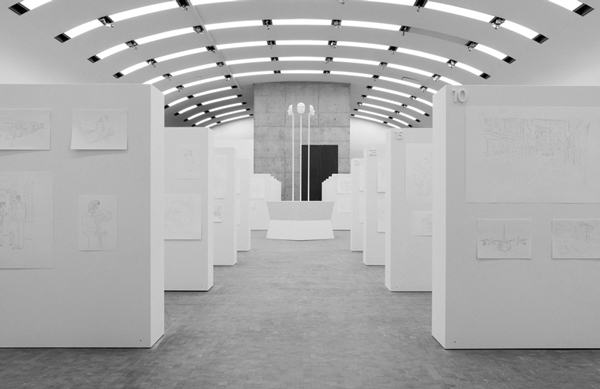
Kunsthalle Wien

— Speakers: Amira Gad, Nicolaus Schafhausen, Remco Torenbosch
The curators of "Blue Times" Amira Gad, Nicolaus Schafhausen and the artist Remco Torenbosch discuss the history of the European flag, socio-economic change in the EU countries and national identities within the Union. Part of the Vienna Art Week.

This event is part of the Blue Times exhibition in Kunsthalle Wien.
Any history of color is, above all, a social history. Blue has a long and topsy-‐turvy history in the Western world. Once considered a hot color, it is now icy cool. This group exhibition delineates the historical narrative of a color: blue. It traces and narrates the historical and social trajectory of a color, looking at the role or significance that a color can play within a society and how this has been reflected in visual culture, pop culture, art, and more. The show re-‐stages or reflects, in a way, this social historical narrative via one color.
 |
A talk with Arne Skaug Olsen
Hordaland Kunstsenter, Bergen
— Hordaland Kunstsenter, Bergen (Norway)
October 9, 2014
Curator: Anthea Buys
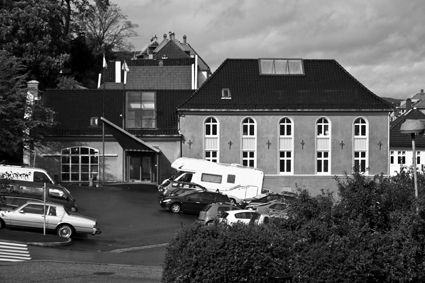
Hordaland Kunstsenter Bergen (Norway)

— Speaker: Arne Skaug Olsen, Remco Torenbosch
A lecture by Remco Torenbosch, in conversation with art critic Arne Skaug Olsen. In the context of the intensive research into the history of the European Flag, opening up intriguing discussion on the changing socio-economics of EU nations, the disappearance of once booming textile industries and the strong individual identities of a union in flux.

HORDALAND ART CENTRE based in Bergen, Norway was established 1976 as the first artist run art centre in Norway. Its activities are based around the exhibition programme with equal emphasis on seminars, presentations and dialogue. Since 1987 HORDALAND ART CENTRE has hosted a Nordic residency programme, from 2008 also open to international artists, curators, writers and other art professionals.

|
Size Matters
Fort Vijfhuizen
— Fort Vijfhuizen, Vijfhuizen
July 6 — August 31, 2014
Curator: Nathalie Zonnenberg
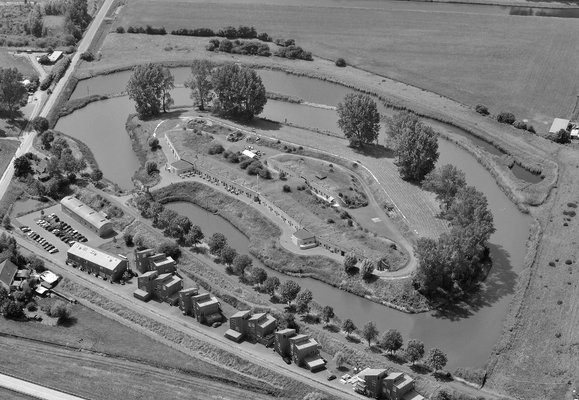
Fort Vijfhuizen, Vijfhuizen, the Netherlands

— Participants: Eva Berendes, Lucas Lenglet, Navid Nuur, Esther Stocker, Remco Torenbosch
Objectivity, seriality, reproducibility and participation of these aspects have been given a new meaning. In the work of the artists in this exhibition In particular, the physical aspect of Minimal Art, the 'Gestalt', plays a crucial role. In various works The scheme of the works in this exhibition compared with the characteristic areas of the Arts Fort. The visitors complete if it were the work, it's their body that determines the size of things.

Fort at Vijfhuizen is part of the sector Locks in the Stelling van Amsterdam. It was the task of this fort to the ring canal and embankment of the Haarlemmermeer polder and the remaining dry strip of land along the western edge of the polder, to defend.
Fort at Vijfhuizen is based on the design model 'A' from 1897, where the retractable turrets had an independent place on the flank angles. Is also a so-called Genius Shed on site. This metal Genie Shed is the only surviving example of this type. In the nearby Geniedijk is a secondary battery.
 |
Threads
Museum Arnhem
— Museum Arnhem, Arnhem
June 29, 2014
Curator: Mirjam Westen
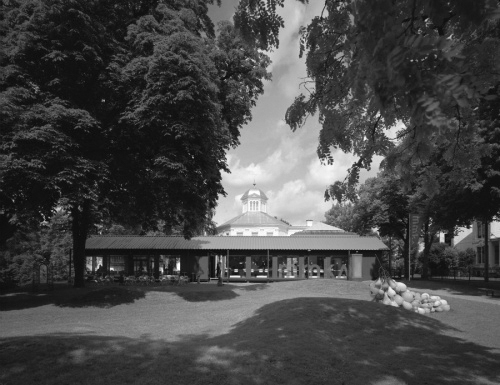
Museum Arnhem, Arnhem, the Netherlands

— Speakers: Mirjam Westen, Remco Torenbosch
In the context of the intensive research into the history of the European Flag, opening up intriguing discussion on the changing socio-economics of EU nations, the disappearance of once booming textile industries and the strong individual identities of a union in flux, Museum Arnhem organised an event in the context of the European Blue(s).

The exhibition is multidisciplinary and includes installations, video works, wall hangings and standing objects, some of which are interactive. Thus visitors will be able to make a stitch on the embroidery hoop Crossover Collective (2013) by Floor Nijdeken(1981, Apeldoorn) and get to know Internet ‘cross-links’ in contemporary culture in Thomas Boland’s (1987, Apeldoorn) project which links 40 ‘hotspots’ in Arnhem with each other and with Museum Arnhem: wireless.
 |
x
A talk with Patricia Reed
Motto, Berlin
— Motto, Berlin
June 14, 2014
Motto Berlin bookstore

Motto Berlin

— Speakers: Patricia Reed, Remco Torenbosch
In the context of the intensive research into the history of the European Flag, opening up intriguing discussion on the changing socio-economics of EU nations, the disappearance of once booming textile industries and the strong individual identities of a union in flux.

Artist and writer Patricia Reed (b. 1977, Canada) lives and works in Berlin. The focus of her artistic and textual practice is the contingency of normality. The play with the plasticity of the normal, both conceptually and materially, constitutes the foundation of her practice.
 |
The Story Behind
Nogueras Blanchard, Barcelona
— Nogueras Blanchard, Barcelona
March 20 — April 25, 2014
Curator: Direlia Lazo
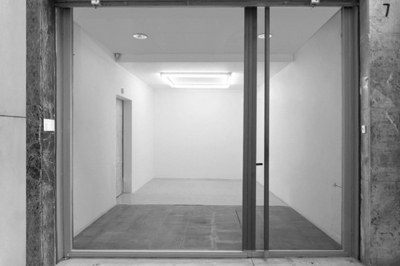
Nogueras Blanchard, Barcelona, Spain

— Participant: Remco Torenbosch
— Part of the serie: Lisa Oppenheim, Tatiana Mesa, Haris Epaminnda, Francesco Arena, Christopher Knowles, Tris Vonna-Michell, Danh Vo
European contextualisation is part of an ongoing investigation into the history and production of the blue flag of the European Union designed by Arsène Heitz and Paul Lèvy in 1955. The presentation shows a collection of textile fabrics made in the European blue color code by the still existing weaving mills in the European Union. Although the color code for the EU flags is mandated, because of the differing production processes in each country and at each mil, it can still vary, resulting in a wide diversity of blue tints, as seen in this collection.
According to Torenbosch, these interpretations are a striking metaphor for the more recent European situation: “The idea of Europe is not a collective concept, and it certainly can not be defined. Each member country has different ideas about its meaning… The color differences reflect the diversity in expectations and visions.”

The Story Behind is an extended group exhibition articulated in a series of several individual presentations of an artwork. The project will focus on those artistic projects in which the story or reference– be it fictional or real– plays a central role, conceptually or formally, and is crucial to understand and fully appreciate the artist’s proposal.
A large part of contemporary art practice is based on the telling of it, whether through the conceptualization of intentions that might not be noticeable from just looking at the piece or through the description of the underlying work processes that are crucial in the understanding of the works, or also through the artist’s own interpretations that give way to a specific reading of his or her pieces. In any case, the recou- nting of a piece, meditated or spontaneous, influences our perception of it.
 |
Threads
Museum Arnhem
— Museum Arnhem, Arnhem
March 15 — Augustus 17, 2014
Curator: Mirjam Westen

Museum Arnhem, Arnhem, the Netherlands

— Participants: Faig Ahmed, Zarina Bhimji, Thomas Boland, Marie Julia Bollansée, Célio Braga, Tiffany Chung, Julie Cockburn, Kyriaki Costa, Ana de la Cueva, Yael Davids, Shezad Dawood, Glucklya, Nicholas Hlobo, Merel Karhof, Aisha Khalid, Fransje Killaars, Kimsooja, Monali Meher, Christien Meindertsma, Almagul Menlibayeva, Floor Nijdeken, Barbara Polderman, Saad Qureshi, Berend Strik, Lin Tianmiao, Remco Torenbosch
Threads will feature works from more than 20 international artists and designers in which the medium of thread or textiles play a prominent role. Their work can be seen as a metaphor for the ‘interweaving’ of artistry and craft; art and the public; and personal and societal themes.

The exhibition is multidisciplinary and includes installations, video works, wall hangings and standing objects, some of which are interactive. Thus visitors will be able to make a stitch on the embroidery hoop Crossover Collective (2013) by Floor Nijdeken(1981, Apeldoorn) and get to know Internet ‘cross-links’ in contemporary culture in Thomas Boland’s (1987, Apeldoorn) project which links 40 ‘hotspots’ in Arnhem with each other and with Museum Arnhem: wireless.
 |
A talk with Max Andrews Fundació Antoni Tàpies Library
— Fundació Antoni Tàpies Library
March 18, 2014
Curator: Direlia Lazo
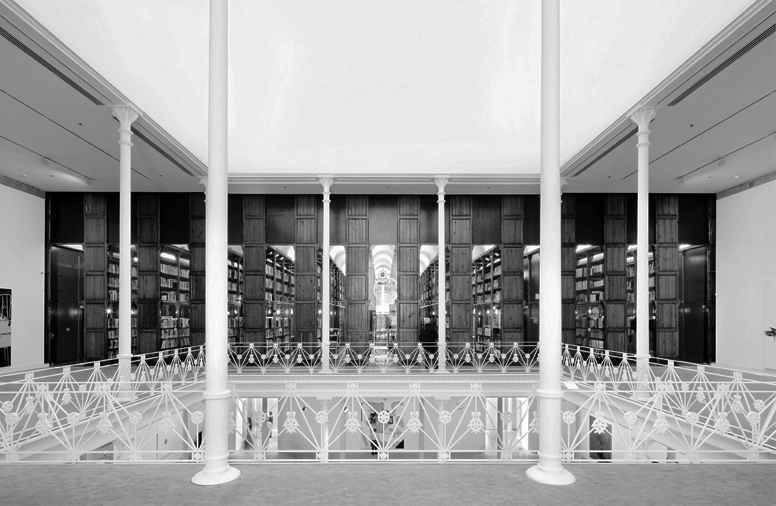
Fundació Antoni Tàpies Library, Barcelona, Spain

— Speakers: Max Andrews (Latitudes), Remco Torenbosch
In the context of the solo exhibition European Contextualisation at NoguerasBlanchard, the gallery has organised the book launch of Remco Torenbosch's most recent publication 'European contextualising in analytical sociology and ethnographical representation on history and present' (Black Dog Publishing, 2014) at the library of Fundació Tàpies. The exhibition is part of the exhibition cycle 'The Story Behind' curated by Direlia Lazo. This event consists of a talk between Max Andrews (Latitudes) and Remco Torenbosch.
Latitudes is an independent curatorial office initiated in April 2005 by Max Andrews and Mariana Cánepa Luna, that works in an international context from and in Barcelona, Spain. We initiate and develop contemporary art projects in association with institutions and collaborate with artists in productions encompassing a range of organisational forms and scales: genres of display and presentation; editorial practice and publication; forms of assembly, hosting and programming; as well as theoretical and interpretative contexts.

This publication profiles the documents, design proposals and written correspondence between Heitz, Lévy, and further collaborators they would form the painstakingly diplomatic development of an iconic vexillological moment.
As part of the book's research, a collection of fabric monochromes woven by weavers from all 28 member states of the EU in th base colour of the flag was compiled. These collated monochromes as such become a map themselves of the socio-economic shift within EU member communities, an embodiment of the disappearing textile industries of Europe.

|
A
A
Paul O’Neill and Remco Torenbosch de Appel art centre
— de Appel arts centre, Amsterdam
January 5, 2014
Coordinator: Guus van Engelshoven

'European contextualising in analytical sociology and ethnographical representation on history and
the present’

— Speakers: Paul O’Neill, Remco Torenbosch
— Moderator: Guus van Engelshoven
On January 5th 2014, de Appel arts centre welcomes two guests: Remco Torenbosch, artist from the Prix de Rome exhibition and curator, writer, artist, and educator Paul O’Neill.
Remco Torenbosch will present his publication part of the research for his work in the Prix de Rome exhibition: European Contextualising in Analytical Sociology and Ethnographical Representation on History and the Present, 2013. With contributions by Charles Esche, Mihnea Mircan and the Council of Europe Strasbourg. Published by Black Dog Publishing London
Paul O'Neill will present the curatorial anthology Curating Subjects (2007), Curating and the Educational Turn (2010) and Curating Research (2014), published by de Appel and Open Editions (Amsterdam and London). With this series of theoretical publications, de Appel arts centre aims to share the specific knowledge on curatorial practice taught in the Curatorial Programme with a broader audience. On the occasion of the publication of Curating Research, Paul O’Neill will talk about the history of the series and the relations between the different publications.

Paul O’Neill is currently Director of the Graduate Program in Curatorial Studies at the Center for Curatorial Studies, Bard College, New York. He is international tutor of the de Appel Curatorial Programme, Amsterdam, and international research fellow with The Graduate School of Creative Arts and Media, Dublin. O’Neill is author of Locating the Producers: Durational Approaches to Public Art (Amsterdam, Valiz, 2011), edited with Claire Doherty. He recently completed the authored book The Culture of Curating, the Curating of Culture(s), (Cambridge, The MIT Press, 2012).
 |
A lecture on engagement
AKV|St.Joost, Breda
— AKV|St.Joost, Breda
March 27, 2014
Coordinator: Fine Arts Department
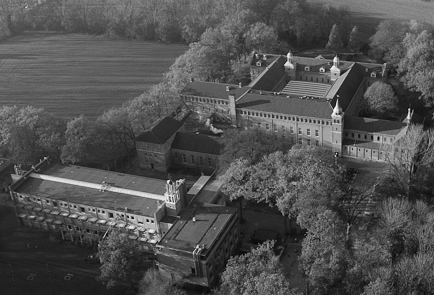
AKV|St.Joost, Breda, the Netherlands

— Speakers: Hans den Hartog Jager, Max Bruinsma, Joost Conijn, Sander van Bussel, Remco Torenbosch, Michael Tedja, Martine de Wit (DUS architects), Albo Helm, Lydia Schouten, Jean-Marc van Tol (fokke en sukke), Herman van Bostelen, Pepijn Zurburg (designpolitie), Bas Vroege, Thomas Kuijpers, Yuri Veerman, Ben Krewinkel, Pepe Heykoop, Femke Herregraven, Marc Bijl, Marc Schmidt, Arne Hendriks, Annie Fletcher
Engagement. There is no clear official definition of what constituted a Studium generale. The term Studium generale first appeared at the beginning of the 13th century, out of customary usage, and simply meant a place where students from everywhere were welcome (not merely those of the local district or region)

Professor and Director Gérard van Dinther began his first class at the ‘Académie Impériale et Royale de Peinture, Sculpture et Architecture’ (Royal and Imperial Academy of Painting, Sculpture and Architecture) in ’s-Hertogenbosch on 1 October 1812. This marked the start of the art academy that is now known as the School of Fine Art and Design|St.Joost. Although the first drawing school in Breda dates back to 1825, the foundations for what used to be St.Joost were not laid until 1945. It was in this year that the ‘Vrije School van Beeldende Kunst’ (Free Academy of Visual Art) was set up by the artists Dio Rovers, Gerrit de Morée and Niel Steenbergen. The merger in 2004 of Hogeschool Brabant and Hogeschool ’s-Hertogenbosch saw the School of Fine Art and Design (AKV, Akademie voor Kunst en Vormgeving ’s-Hertogenbosch) and St.Joost (the art academy in Breda) become one. This is how the School of Fine Art and Design|St.Joost became part of Avans University of Applied Sciences.
 |
Prix de Rome 2013
de Appel arts centre
— de Appel arts centre, Amsterdam
October 25, 2013 — January 26, 2014
Organisation: Mondriaan Fund

de Appel arts centre, Amsterdam, the Netherlands

— Participants: Christian Friedrich, Falke Pisano, Remco Torenbosch, Ola Vasiljeva
— Moderator: Hendrik Folkerts
The Prix de Rome is the oldest and most prestigious award in the Netherlands for artists under the age of 40. The award dates back to 1808 when Louis Napoleon introduced the Prix de Rome in the Netherlands to promote the arts. Although the award adopted various guises over the years, the aim has always been to trace talented artists and promote their further development and visibility. The Mondriaan Fund has organised the award since January 2013. The award and the organisation are funded by the Mondriaan Fund. The four selected artists, together with 46 other artists, were nominated by a wide group of scouts and then chosen by an international jury. Each artist presents very different but also subtly related interests and creates art which both inspires and challenges.
— The jury consists of Kathleen Bühler (curator at the Museum of Fine Arts Bern), Ann Goldstein (director at the Stedelijk Museum Amsterdam), Nicoline van Harskamp (artist and winner of the Prix de Rome 2009), Navid Nuur (artist) and Domeniek Ruyters (editor in chief of Metropolis M).

On 26 October, an exhibition opened in de Appel arts centre in Amsterdam featuring the work of four artists who have been nominated for the Prix de Rome 2013. Christian Friedrich, Falke Pisano, Remco Torenbosch and Ola Vasiljeva created new work which was assessed by the international jury. The exhibition was on show until 26 January 2014.

|
Round-table Discussion
La Biennale di Venezia 2013
— Palazzo Giustinian Lolin, Venezia, Italy
May 30, 2013
Coordinator: Mondriaan Fund
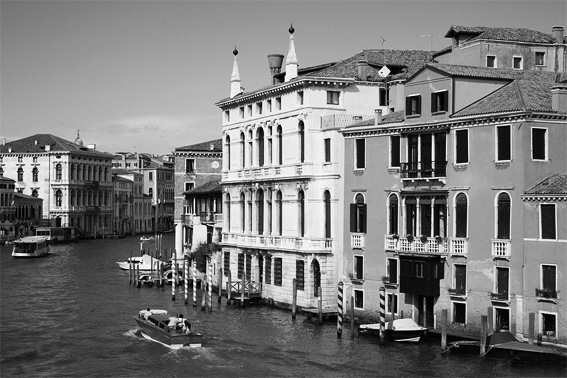
Palazzo Giustinian Lolin,Venezia, Italy

— Speakers: Rossella Biscotti and Giorgio Andreotta Calò (Italian artists who work in the Netherlands), Gianfranco Maraniello (director of Museo d'Arte Moderna di Bologna and curator of important exhibitions with Dutch artists), Jan Dibbets and Remco Torenbosch (Dutch artists) and Lorenzo Benedetti (curator Dutch entry). In the presence of Michiel den Hond, Ambassador of the Kingdom of the Netherlands
— Moderator: Ann Demeester (director of de Appel arts centre in Amsterdam)
Speaker at the 'Round-table Discussion' during the preview of the the 55th International Art Exhibition - La Biennale di Venezia 2013. Presented by The Mondrian Fund and the Embassy of the Kingdom of the Netherlands in Rome at Palazzo Giustinian Lolin,Venezia, Italy.
The discussion will take a close look at the artistic ties that exist between Italy and the Netherlands - from both a historical and comtemporary perspective - and will include representatives from several generations of Italians and Dutch artists and curators.

The Mondrian Fund and the Embassy of the Kingdom of the Netherlands in Rome are pleased to invite you to a Round-table Discussion during the preview days of the 55th International Art Exhibition - La Biennale di Venezia 2013. The direct occasion for this event are two presentations that will be held at the upcoming Venice Biennale: Mark Manders' exhibition in the Dutch Pavilion, curated by the Italian curator Lorenzo Benedetti (director De Vleeshal, Middelburg); and Germano Celant's re-staging by the Fondazione Prada of the groundbreaking exhibition Live in Your Head: When Attitudes Become Form, organised in 1969 by Herald Szeemann in Kunsthalle Bern.

|
Prix de Rome (publication)
nai010 publishers
— nai010 publishers
ISBN 978-94-6208-105-5
Coordinator: Mondriaan Fund
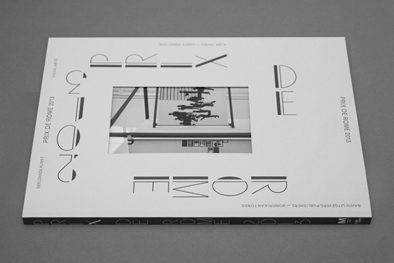

nai010 publishers, 2013

— Contributions: Christian Friedrich, Falke Pisano, Remco Torenbosch and Ola Vasiljeva, Hans den Hartog Jager, Stefan Kuiper, Roos van der Lint
"The publication Prix de Rome 2013 presents portraits of four talented young artists nominated for the prestigious Prix de Rome Award. Christian Friedrich, Falke Pisano, Remco Torenbosch and Ola Vasiljeva were selected by an international jury because their work is surprising, enthralling and makes you hungry for more."
All four artists specialize in presentations based on theory and research. For the Prix de Rome they each created a new work. Besides an introduction by Hans den Hartog Jager, the nominated artists are portrayed by Stefan Kuiper and Roos van der Lint.
Prix de Rome 2013
Paperback: 98 pages
Publisher: nai010 publishers
Design: Lesley Moore
Language: English
ISBN: 978-94-6208-105-5
— Images
— Order here

The Prix de Rome is the Netherlands’ oldest, most important prize for visual artists under 40. The award dates back to 1808 when Louis Napoleon introduced the Prix de Rome in the Netherlands to promote the arts. Although the award has regularly been renewed, the aim is still to trace talented artists and encourage them to develop and increase their visibility. Since January 2013, the award has been organised and financed by the Mondriaan Fund.
 |
Against Interpretation
San Serriffe, Amsterdam
— San Serriffe, Amsterdam
June 22, 2013
Coordinator: Onomatopee, Whatspace
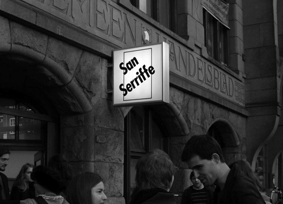
San Serriffe, Amsterdam

— Participants: Koen Delaere, Cheryl Donegan, Harm van den Dorpel, Wade Guyton, Bas van den Hurk, Sandra Kranich, Alexandra Leykauf, Tom Meacham, Rory Pilgrim, Remco Torenbosch, Joelle Tuerlinckx, Evi Vingerling
Against Interpretation, a project that builds upon abstract relations in the public domain (a collaboration between Onomatopee and Whatspace)
‘Abstraction is the opposite of information’ states the critic/observer Jan Verwoert. Abstraction can be a way to return to the image, whereby the formal aspects of the image determine its content and its power. This experiment is being carried out by artists who use abstraction in a contemporary fashion. They use tradition freely, but also take on pop culture - doing so self-consciously, and aiming, through abstraction, to exude their own erotics.

The information overload races on; in public space it’s more like overkill. Whatspace wants to draw from our relationship to information in public space - to offer us the consecutive possibilities of confrontation, tranquillity and renewed concentration - and they want to do so experimentally, through the power of abstract art. Not only do they want to make this power manifest, they also want to grasp hold of it. Through approaching information exchange experimentally, as an intensely loaded erotics which manifests in and through abstract art, this project becomes fascinating - both for people interested in the powers of abstraction and for those who wish to sharpen their perception of things as they are. Interpretation is the revenge of the intellect (the critic) upon art’ states the famous North American writer, critic and essayist, Susan Sontag, in the essay ‘Against Interpretation’. She suggests that ‘we must learn to see more, to hear more, to feel more’. To achieve a more sensitive reading of the work requires a good listener. Sontag therefore makes the plea, ‘in place of a hermeneutics we need an erotics of art.’

|
Radio Calling
TENT, Rotterdam
— Tent, Rotterdam, The Netherlands
December 15, 2013
Curator: Jesse van Oosten

Tent, Rotterdam

— Participants: Jay Tan, Jonas Lund, Remco Torenbosch, Koen Taselaar, Sarah Tripp
The Radio Calling weekend event explores in a mini-symposium, masterclasses, and live radio performances, radio as a tool, platform, and medium for contemporary art. How can the medium contribute to the production and perception of a work of art?
Sunday's live radio performances, presented and recorded in front of an audience, include Jonas Lund, Koen Taselaar and Remco Torenbosch and proposals selected through the open call. The weekend ends with a radio performance from Camden Arts Centre in London by the Rotterdam artist Jay Tan. Live stream on This is Tomorrow.

The Radio Calling weekend event explores various forms of radio in contemporary art through live radio performances, masterclasses and a mini-symposium. How can the medium contribute to the production and perception of a work of art? Why is the use of radio increasingly popular among artists? Radio Residencies, London and Rotterdam Radio Calling launches Radio Residencies, a new long-term partnership between TENT and Camden Arts Centre in London. Both institutions have invited an artist to produce a new performance work in which the possibilities of live performance and broadcasting are examined. The London artist Jeremy Evans and the Rotterdam artist Jay Tan are the first artists to participate in the residency project.

|
Nickel van Duijvenboden,
Remco Torenbosch Duende
— Brak/Duende, Rotterdam, The Netherlands
October 13 — October 21, 2012
Curator: Jack Segbar
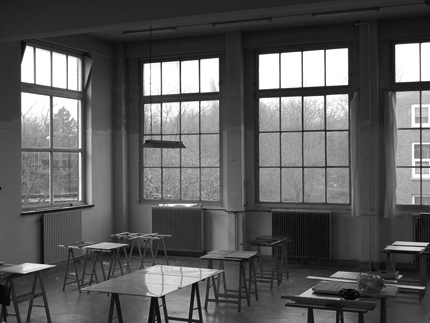
Duende, Rotterdam

— Participants: Nickel van Duijvenboden, Remco Torenbosch
Within this exhibition Remco Torenbosch is showing components of his study on the concept of Europe entitled: European Conceptualization in analytical philosophy on history and present. The works that have emerged from this study are a reflection of the political, social and economic changes the European Union has undergone since the founding and the underlying accompanying utopian ideologies during the formation.

One element in this research is the creation of a collection fabric samples in the blue colour of the European flag, gathered in the countries of the European Union. With this collection of fabric samples Torenbosch is questioning if the collection can be ultimately considered as cultural objects and possibly can represent an ethnographic value as remnants from the various disappearing local textile industries, which results into wide social and economic changes. Within the colour differences between the fabric samples, this collection also underlines the European differences by country and it’s standard idea about the European blue. In the physical sense, the European blue colour functions as a monochrome within a modernist tradition with its purity laws, its longing for transcendence and an optimistic believe in the utopian potential. Simultaneously in a psychological sense the blue functions as a blue-screen (chroma key) where the broad and critical thoughts about Europe and the European Union can be projected, an idea that in both cases is a parallel to the so-called European collective thought.

|
Autumn of Modernism II
Temporary Gallery, Cologne
— Temporary Gallery, Cologne, Germany
September 7 — October 28, 2012
Curator: Lorenzo Benedetti
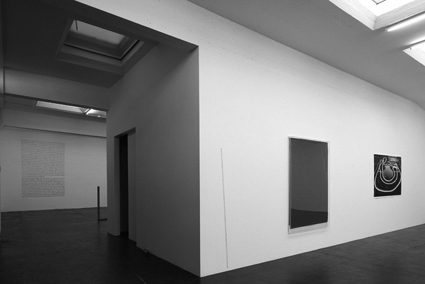
Installation view of Autumn of Modernism II at the Temporary Gallery Cologne, 2012. Works from left to riight: Martijn in 't Veld, Remco Torenbosch (European conceptualization in analytical philosophy on history and present B), gerlach en koop, Remco Torenbosch (European conceptualization in analytical philosophy on history and present A), Batia Suter. Courtesy of Temporary Gallery, Cologne.

— Participants: Gwenneth Boelens, Piet Dieleman, gerlach en koop, Sara van der Heide, Martijn Hendriks, Bas van den Hurk, Rob Johannesma, Katja Mater, Marc Nagtzaam, Falke Pisano, Roma Publications, Petra Stavast, Batia Suter, Remco Torenbosch, Martijn in ’t Veld
The title of the exhibition was inspired by The Autumn of the Middle Ages, Johan Huizinga’s classic book published in 1919, a study of the forms of life, thought, and art at the end of the Middle Ages. The book shows that the artists of that period achieved their groundbreaking successes precisely because they drew on the past. This gave them a better grasp of the changes occurring all around them.
Images

The explosion of news outlets and ways of consuming the news has made our society very focused on the now, and we sometimes forget to consider the future or the past. Artists try to step out of the present by consulting sources from the past and using them in their art, thus attempting to build bridges to the future.
.

|
d
EUROPA
GAMeC, Bergamo
— GAMeC, Bergamo, Italy
June 14 — September 30, 2012
Curator: Stefano Raimondi
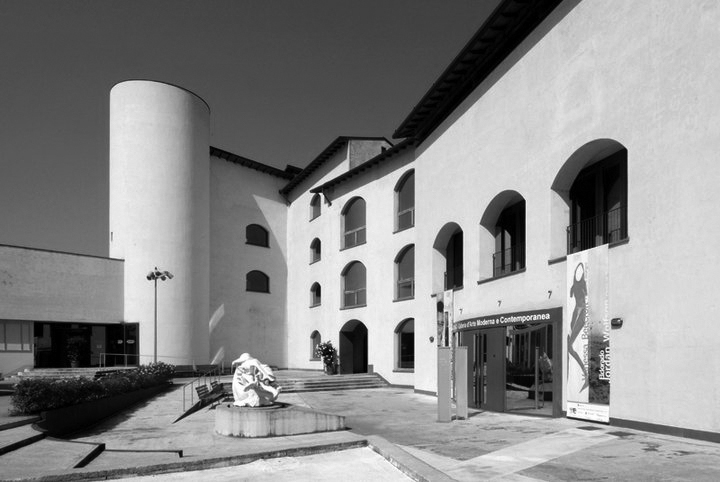
Detail of the courtyard and glass pavilion of the GAMeC with in the back an outdoor version of European conceptualization in analytical philosophy on history and present C.Courtesy of GAMeC - Galleria d’Arte Moderna e Contemporanea, Bergamo, Italy.
 — Participant: Remco Torenbosch
— Participant: Remco Torenbosch
In 1950 the French Foreign Minister Robert Schuman presented a plan for cooperation among European states. Seven years later, the first six countries signed the Treaty of Rome, creating the European Economic Community (EEC), the forerunner of what we now call the European Union. Never in its brief history has the European Union been under as much pressure as it is today.
In the courtyard and glass pavilion of the GAMeC but also in several locations in the city of Bergamo, Remco Torenbosch presents a critical variety of situations and thoughts. The works that are presented are a reflection on the political and socio-economic changes to which Europe has recently been subjected. In this, Torenbosch investigates the language and manifestations through which a community and continent declares, represents and questions itself through the consciousness of contemporary and historical references. Within this research, Torenbosch tries to distil the situation as a return to a more human scale and perspective by underlining the importance of care and action.

EUROPA is the first solo exhibition in an Italian institution of the Dutch artist Remco Torenbosch. It is the result of a three-month residency in Bergamo for the project entitled The Blank Artist in Residence – Fondazione Banca Popolare di Bergamo, which has been conceived by the no-profit association The Blank in collaboration with GAMeC and the Accademia Carrara di Belle Arti of Bergamo and realized thanks to the support of Fondazione Banca Popolare di Bergamo, the Consulate General of the Kingdom of the Netherlands in Milan and the Embassy of the Kingdom of the Netherlands in Rome.
.

|
Autumn of Modernism (publ.)
Roma Publications
— Roma Publications
ISBN 978 90 77459 79 9
Curator: Lorenzo Benedetti
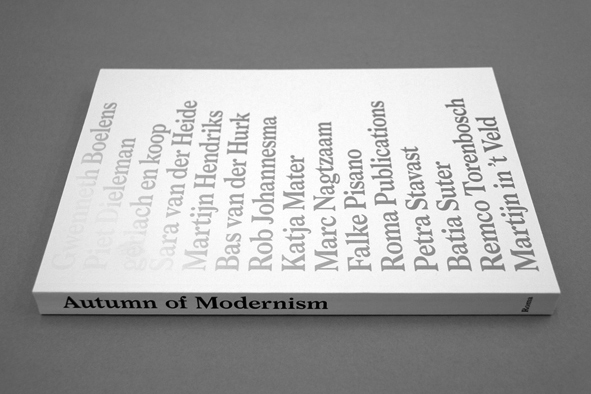

Autumn of Modernism Catalogue by Roma Publications, 2012

— Contributors: Gwenneth Boelens, Piet Dieleman, gerlach en koop, Sara van der Heide, Martijn Hendriks, Bas van den Hurk, Rob Johannesma, Katja Mater, Marc Nagtzaam, Falke Pisano, Petra Stavast, Batia Suter, Remco Torenbosch, Martijn in 't Veld. And with an introduction by Lorenzo Benedetti
Different from a regular exhibition catalogue, this book contains autonomous contributions by 14 artists who where invited by curator Lorenzo Benedetti to take part in the exhibition 'Autumn of Modernism' at De Vleeshal, Middelburg. The contributions somehow respond in an indirect way to the social changes of our day, such as the present economic crisis.
Autumn of Modernism
Publisher: Roma Publications
Design: Roger Willems and Louis Lüthi.
ISBN 978 90 77459 79 9
— Order here
— Images

The title of the exhibition was inspired by The Autumn of the Middle Ages, Johan Huizinga’s classic book published in 1919, a study of the forms of life, thought, and art at the end of the Middle Ages. The book shows that the artists of that period achieved their groundbreaking successes precisely because they drew on the past. This gave them a better grasp of the changes occurring all around them.
The explosion of news outlets and ways of consuming the news has made our society very focused on the now, and we sometimes forget to consider the future or the past. Artists try to step out of the present by consulting sources from the past and using them in their art, thus attempting to build bridges to the future.
.

|
Collection Presentation
De Vleeshal, Middelburg
— De Vleeshal, Middelburg, The Netherlands
July 1 — October 21, 2012
Curator: the public
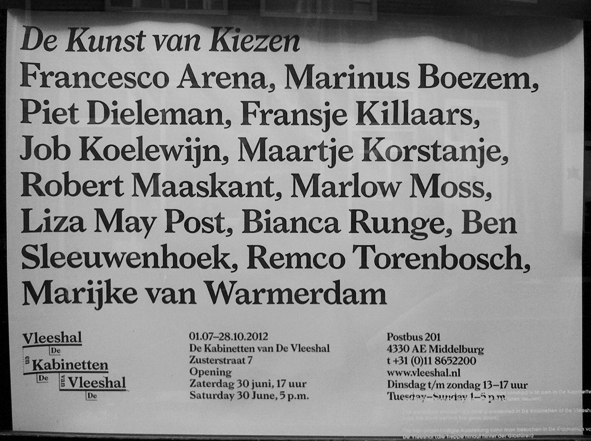
De Vleeshal, Middelburg

— Participants: Maartje Korstanje, Marlow Moss, Job Koelewijn, Bianca Runge, Marijke van Warmerdam, Liza May Post, Fransje Killaars, Remco Torenbosch, Marinus Boezem, Francesco Arena, Robert Maaskant, Piet Dieleman, Ben Sleeuwenhoek
SBKM/De Vleeshal is in charge of Middelburg’s municipal art collection, which is stored at the MuHKA(Museum of Modern Art in Antwerp). Selections from the more than 150 works are periodically exhibited at De Vleeshal or De Kabinetten van De Vleeshal. For The Art of Choice, a preliminary selection of 36 works was presented to the public for voting.

This work was in 2010 on display during the exhibition Fault in Cabinets and was subsequently purchased. Torenbosch refers to his work on the social and economic dynamics of our time, translated into formal structures. Untitled (BEP) is a mobile, a schematic representation of the economic term 'Break Even Point (BEP), when a company or institution no profit and no loss (more) and who thus can grow. De Vleeshal, 2010.
.

|
Against Interpretation
Onomatopee, Eindhoven
— Onomatopee, Eindhoven
June 8 — July 15, 2012
Coordinator: Onomatopee, Whatspace
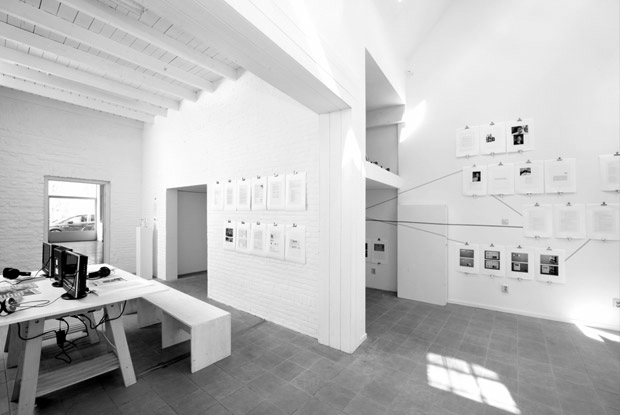
Onomatopee, Eindhoven

— Participants: Koen Delaere, Cheryl Donegan, Harm van den Dorpel, Wade Guyton, Bas van den Hurk, Sandra Kranich, Alexandra Leykauf, Tom Meacham, Rory Pilgrim, Remco Torenbosch, Joelle Tuerlinckx, Evi Vingerling
The information overload races on; in public space it’s more like overkill. Whatspace wants to draw from our relationship to information in public space – to offer us the consecutive possibilities of confrontation, tranquillity and renewed concentration – and they want to do so experimentally, through the power of abstract art. Not only do they want to make this power manifest, they also want to grasp hold of it.

Against Interpretation and Other Essays is a collection of essays by Susan Sontag published in 1966. It includes some of Sontag's best-known works, including "On Style," "Notes on 'Camp'," and the titular essay "Against Interpretation." In the last, Sontag argues that in the new critical approach to aesthetics the spiritual importance of art is being replaced by the emphasis on the intellect. Rather than recognizing great creative works as possible sources of energy, she argues, contemporary critics were all too often taking art's transcendental power for granted, and focusing instead on their own intellectually constructed abstractions like "form" and "content." In effect, she wrote, interpretation had become "the intellect's revenge upon art." The essay famously finishes with the words, "in place of a hermeneutics we need an erotics of art".
.

|
The Theory of Moral Sentiments
SoundArtMuseum, Rome
— SoundArtMuseum (SAM), Rome, Italy
Curators: Riccardo Giagni, Lorenzo Benedetti, Cesare Pietroiusti
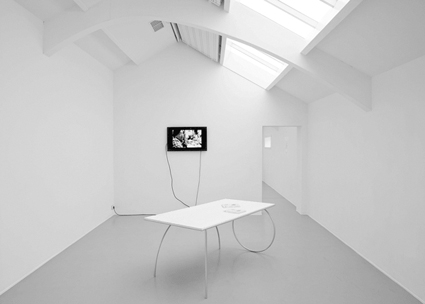
Installation view of the SoundArtMuseum Archive, 2012. Picture: Leo van Kampen

— Participants: Dario D'Aronco, Domenico Mangano, Remco Torenbosch
The Theory of Moral Sentiments is a 1759 book by Adam Smith. It provided the ethical, philosophical, psychological, and methodological underpinnings to Smith's later works, including The Wealth of Nations (1776), which is a reflection on economics at the beginning of the Industrial Revolution and argues that free market economies are more productive and beneficial to their societies. Remco Torenbosch shear within this work only the link to the LibriVox database which hosts free audio books read and runned by volunteers to provide a non-economic (including books on economics) trading situation.
Landscape on the Move will also include the SoundArtMuseum (SAM), a project launched in 2005 as a museum of sound and a place where hundreds of sound-art works by contemporary artists are brought together and exhibited. Many of the sound-art installations in the museum are site-specific, including H. H. Lim’s Daily Music, which has been specially created for Middelburg. As part of the exhibition, a series of new works will be presented to the SAM archives, which will be on display in the exhibition space for consultation by the public. Some of the archives can also be found on the Internet at www.radioartemobile.it, under ‘SoundArtMuseum’.

The Sound Art Museum is an initiative promoted by ZERYNTHIA and RadioArteMobile (RAM), one of the first internet radio stations to discuss the field in between the so called visual arts and sound research.
.

|
Building The New Economy
Accademia Carrara di Belle Arti
— Accademia Carrara di Belle Arti Bergamo
May
7 — 8, 2012
Coordinator: Alessandra Pioselli
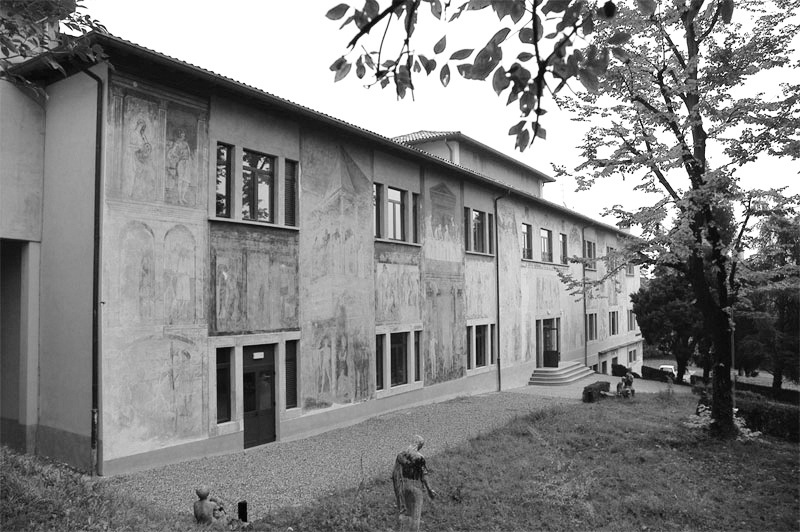
Seminar entitled: Between Act and Protest: Building The New Economy at Accademia Carrara di Belle Arti Bergamo, Bergamo, Italy, 2012

— Participants: Students Accademia Carrara di Belle Arti Bergamo, Remco Torenbosch
The starting point of the two-day seminar (‘Between Act and Protest: Building The New Economy’) at Accademia Carrara di Belle Arti di Bergamo was to involve the students to take part in the discussion about the economic situation that we are dealing with today. On a practically and psychologically approach the students could arrange an alternative while facing the start of a professional practice. They were asked to create the opportunity for themselves to open up their own abilities of designing their daily life by creating methods to put themselves out of the originally economic structure.

The origins of the art gallery lie with the Count Giacomo Carrara, a wealthy collector and patron of the arts, who left a generous legacy to the city of Bergamo at the end of the 18th century. After the Count's death, in 1796, his properties were managed by a nominated commissary until 1958, when the Comune di Bergamo took over direct supervision. In 1810, a new building in the neoclassical style was constructed, the project being undertaken by the architect Simone Elia, a pupil of Leopoldo Pollack.
The museum has continued to augment its collections both with purchases and donations. As of 2006, it possesses 1,800 paintings dating from the 15th to the 19th century, and by artists including Pisanello, Botticelli, Bellini, Carpaccio, Mantegna, Raphael, Moroni, Baschenis, Fra Galgario, Tiepolo, Canaletto and Piccio. Besides paintings, there are drawings and prints, bronzes and sculptures, as well as collections of porcelain, furniture and medals. In 1793, at the same time as the public opening of his gallery, the Count Giacomo Carrara desired that drawing and painting courses be initiated in the same place. The school, which was located in the same building as the art gallery until 1912, now has its own premises nearby.

|
Lecture about relevance
IULM Università, Milan
— IULM Università, Milan, Italy
May 10, 2012
Coordinator: Paola Tognon
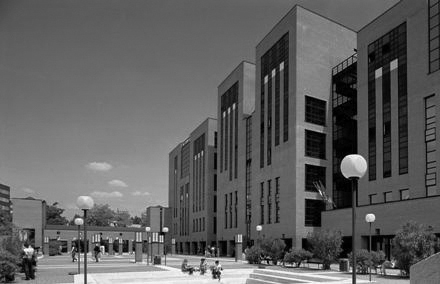
Libera Università di Lingue e Comunicazione (IULM), Milan, Italy

— Participants: Students IULM Università di Lingue e Comunicazione, Remco Torenbosch
Lecture about the subject of relevance: “Know, know how to be, know how to do”. It is on these three cornerstones that IULM University has based its teaching mission, taking inspiration from the principles of UNESCO. Taking strength from its vocation of integrating cultural knowledge and professional competences, the University has from its very inception over 40 years ago always presented itself as a meeting point between the academic world and labour markets.
The Istituto Universitario di Lingue Moderne (I.U.L.M.) was founded in 1968 by the Fondazione Scuola Superiore per Interpreti e Traduttori, under the inspiration of Senator Carlo Bo and Professor Silvio Baridon. From the very beginning the idea behind the project was to satisfy the demands of the labour markets based on analyses of current trends.

Initially, this meant focusing on the study of languages – the sine qua non for becoming a part of an increasingly European framework. Things have changed over the years and it has become crucial to learn how to use specific communication tools. To meet this need, the university’s training opportunities and its facilities have been renewed and upgraded. It was a courageous development, in line with the principles that led IULM to change its identity and update all its syllabuses, closing the courses that had made the institute’s history, introducing new syllabuses and modifying the university’s charter and name. Introduced in 1998, the denomination IULM University of Languages and Communication bears out the institution’s two-fold vocation of teaching languages as well as communication. This is the core principle of the institute’s range of training opportunities.

|
Autumn of Modernism
De Vleeshal, Middelburg
— De Vleeshal, Middelburg, The Netherlands
January 14 — March 24, 2012
Curator: Lorenzo Benedetti

Installation view of Autumn of Modernism at De Vleeshal Middelburg, 2012

— Participants: Gwenneth Boelens, Piet Dieleman, gerlach en koop, Sara van der Heide, Martijn Hendriks, Bas van den Hurk, Rob Johannesma, Katja Mater, Marc Nagtzaam, Falke Pisano, Roma Publications, Petra Stavast, Batia Suter, Remco Torenbosch, Martijn in ’t Veld
The title of the exhibition was inspired by The Autumn of the Middle Ages, Johan Huizinga’s classic book published in 1919, a study of the forms of life, thought, and art at the end of the Middle Ages. The book shows that the artists of that period achieved their groundbreaking successes precisely because they drew on the past. This gave them a better grasp of the changes occurring all around them.
The explosion of news outlets and ways of consuming the news has made our society very focused on the now, and we sometimes forget to consider the future or the past. Artists try to step out of the present by consulting sources from the past and using them in their art, thus attempting to build bridges to the future.

The research European conceptualization in analytical philosophy on history and present started at the end of 2011. Components of this research are shown in the solo exhibition EUROPA at GAMeC - Museum of Modern and Contemporary Art in Bergamo, Italy. And in the group exhibition Autumn of Modernism curated by Lorenzo Benedetti and took place at De Vleeshal and at the Temporary Gallery in Cologne, Germany.
.

|
A Ten-day Communal Kitchen W139 and Casco
— W139, Amsterdam, The Netherlands
December 9, 2011
Curators: Binna Choi, Tim Voss
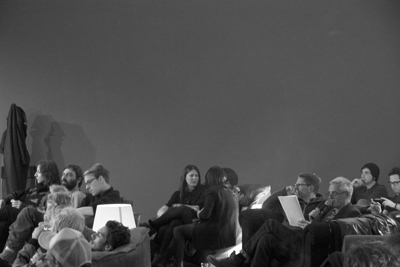
Mandeville
Reading at Kitchen139: A Ten-day Communal Kitchen Experiment A cooperation between W139 and Casco, in the context of The Grand Domestic Revolution – User’s Manual, Jan van Eyck Academie & KijkRuimte, 2012

— Participants: Emory Douglas, Occupy Amsterdam, Premsela, Remco Torenbosch, Jan van Eyck Academie a.o.
More than half a century ago, Hannah Arendt stated that in the modern world two spheres of life – the private and the public –are no longer separate and the economy is actually very much about how to keep a household. However, how much do we know about our economy? Over a century ago, American feminists started building communal kitchens in order to socialise their isolated work as well as save time for other activities such as involvement in the suffrage movement.
What would we gain from such a communal kitchen today? And who is this “we”? W139 cooperates with Casco on ‘Kitchen139’, a ten-day open kitchen and activity series. We invite all for those occupied with multiple deadlines and appointments towards the end of year, to join a collective house management where cooking, eating, talking, thinking, cleaning are all coming together. Inspiring or even more fatiguing, or possibly both?

'Kitchen139' transforms W139 into a ten-day open kitchen and invites all of those occupied with multiple deadlines and appointments towards the end of year, to join a collective house management where cooking, eating, talking, thinking, cleaning are all coming together. Inspiring or even more fatiguing, or possibly both?

|
The Making of Political Textile or Making Textile Political
— IK Paviljoen, Oost-Souburg
November 27 — December 25, 2011
Mondriaan Fund Pilot Recidency
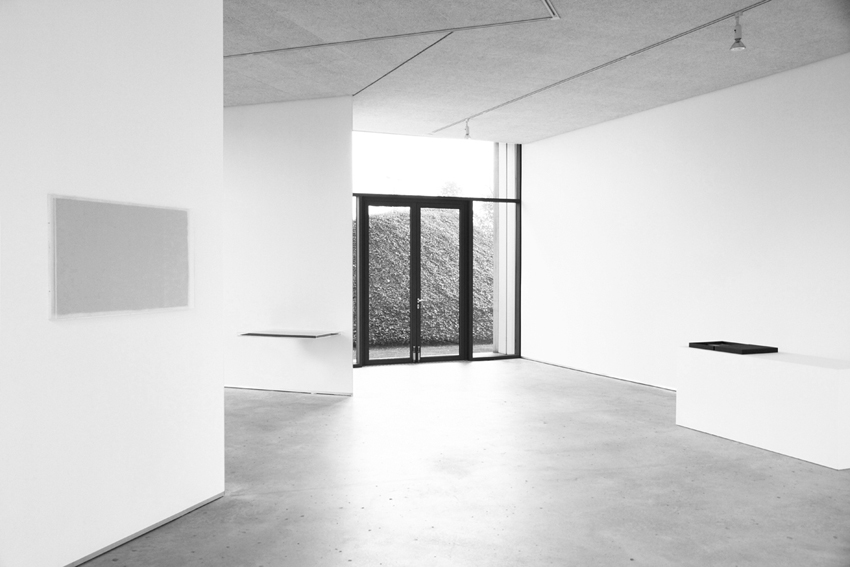
Installation view on Between Act and Protest: The Making of Political Textile or Making Textile Political, 2012

— Participant: Remco Torenbosch
The machine monochromes (Protests Document; Conceptualization in analytical philosophy on history and present, textile version A, B, 2011) in the perspex frames are presented consist of two identical custom folded pieces of cotton from the tent industry. This particular material has increased since the last decade a prominent place during protests and demonstration camps such as the Puerta del Sol in Madrid, in Tahrir Square in Cairo during the global Occupy Movement.
The canvas is stripped of its functional ornaments as stitching and zippers making the tent parts are returned to their original form and substance language. By this act are the materials are at an intermediate stage of function and action, what was previously a tent can now be a flag or banner, presented as a political object / document or just dust remain. Torenbosch these translations is especially interested in documenting the textile as an object which is normally a direct connection enters the cell, performative character which also features the protest.

Founder and creator of the concept of the Foundation IK sculptor Jan van Munster (Gorinchem, 1939). Already in the 60s, his work in major museums in Netherlands. Then he quickly international fame. In contrast to the wide variety of the material in which he works, the theme is remarkably homogeneous. For decades he investigates consistently and increasingly from other angles the topic "energy". Heat and cold, light and darkness, tension and release, compression and expansion, visibility and invisibility witnesses of polarity that dominated his oeuvre. As a summary for all forms of tension chooses Van Munster around 1984 the sign + / - as commonly used, artistic formula. By making images which his own body dimensions underlie creates a new dimension: the imagination of his creative energy into his work. This led him to the suggestive formula I. Everyone refers to himself as IK. I respect everyone, challenges and demands. I, who is that?

|
An Inquiry into the Nature (...)
Stroom Den Haag
— Stroom Den Haag, The Hague
March 20, 2011
Curator: Maaike Lauwaert
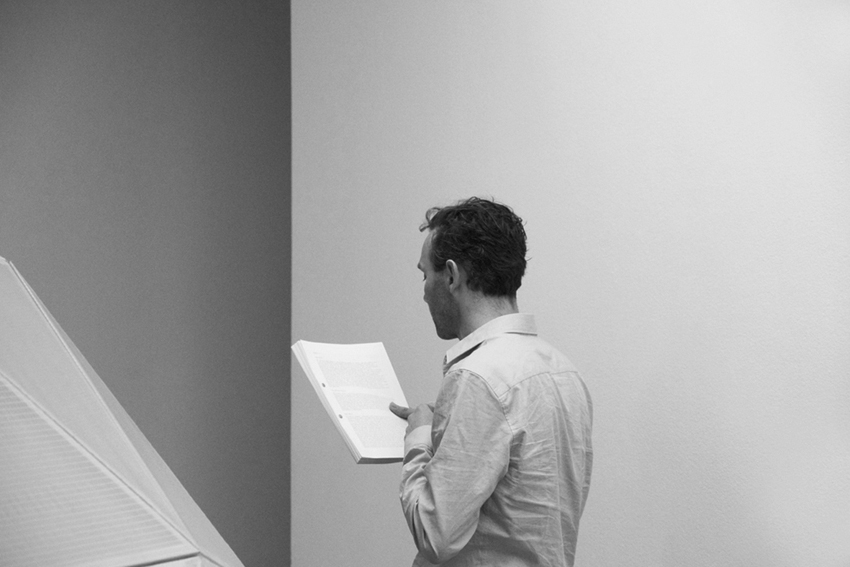
An Inquiry into the Nature and Causes of the Wealth of Nations and The General Theory of Employment, Interest and Money at Stroom The Hague, 2011

— Orators: Joost Nieuwenburg, Mieke Coupé
In the form of a dialogue two speakers will recite two influential but conflicting theories on economy: by Adam Smith* and John Maynard Keynes**. The Stroom exhibition space will function as a platform for rehearsal. (at Stroom the texts were read by Joost Nieuwenburg and Mieke Coupé).
As part of: 'There, I Fixed It' stands for an attitude, a way of looking at materials and problems that is at the same time bold and unexpected. These problems can be small and trivial, but also large and global. The exhibition presents work that is characterized by the ability to turn the ordinary into something extraordinary. The artists succeed in doing this through their unique use of materials, a different view on what is useful and a great feeling for improvisation, self-sufficiency and temporality. The artists avoid, directly or indirectly, in a concrete or poetic way, dominant economic strategies and production models. Thereby they show us unruly solutions to urgent problems.

* 'An Inquiry into the Nature and Causes of the Wealth of Nations' by Adam Smith was first published in 1776.
** 'The General Theory of Employment, Interest and Money' by John Maynard Keynes was first published in 1936.

|
Oh Crisis II
Huize Frankendael, Amterdam
— Huize Frankendael, Amterdam
March 28 — April 28, 2011
Curator: Nathanja van Dijk

Huize Frankendael, Amterdam

— Participants: Lara Almarcegui, Jan Fabre, William Monk, David Osbaldeston, Reed Siefer, Dave Sinai, Berend Strik, Remco Torenbosch, Koen van Mechelen, Roger van de Wouwer, Jason van der Woude
What is the value of art. Seen from the current crisis seems to demand in the media to impose more and more. To this kind of discussion seems to limit the values. Themselves Oh Crisis 2.0 aims to address this issue, by working with managers to reflect on the value and quality of art an answer. The result is a kaleidoscopic image, in which sometimes the emphasis on the economic domain, then the political and socio-cultural.

“The capitalistic side of economics is the purest form of socialism: It doesn’t care what your religion or skin colour is, it only cares about money”

|
Financial Times (reading)
De Vleeshal, Middelburg
— De Vleeshal, Middelburg, The Netherlands
June 6, 2010
Curator: Lorenzo Benedetti

De Kabinetten van De Vleeshal, Middelburg

— Participants: Three orators
In the exhibition Fault at De Kabinetten van De Vleeshal, Remco Torenbosch (b. 1982) reduces the space (material and formal) devoted to economic politics, by using economics as a new humanistic modernism and reducing as a new minimalism.
Torenbosch navigates the areas between the found object, the process, and the built or manufactured. His works seem to be charged with the myths of modernism with its purity laws, it’s yearning for transcendence, and its optimistic faith in the utopian potential of freedom. But at the same time they reveal the absurdity of these notions. In an almost mechanical, robotic fashion, Torenbosch dissects the cadaver of a modernism that lost its innocence.

“The capitalistic side of economics is the purest form of socialism: It doesn’t care what your religion or skin colour is, it only cares about money”

|
Fault
De Vleeshal, Middelburg
— De Vleeshal, Middelburg, The Netherlands
April 17— June 13, 2010
Curator: Lorenzo Benedetti

De Kabinetten van De Vleeshal, Middelburg

— Participant: Remco Torenbosch
In the exhibition Fault at De Kabinetten van De Vleeshal, Remco Torenbosch (b. 1982) reduces the space (material and formal) devoted to economic politics, by using economics as a new humanistic modernism and reducing as a new minimalism.
Torenbosch navigates the areas between the found object, the process, and the built or manufactured. His works seem to be charged with the myths of modernism with its purity laws, it’s yearning for transcendence, and its optimistic faith in the utopian potential of freedom. But at the same time they reveal the absurdity of these notions. In an almost mechanical, robotic fashion, Torenbosch dissects the cadaver of a modernism that lost its innocence.

“The capitalistic side of economics is the purest form of socialism: It doesn’t care what your religion or skin colour is, it only cares about money”

|


































